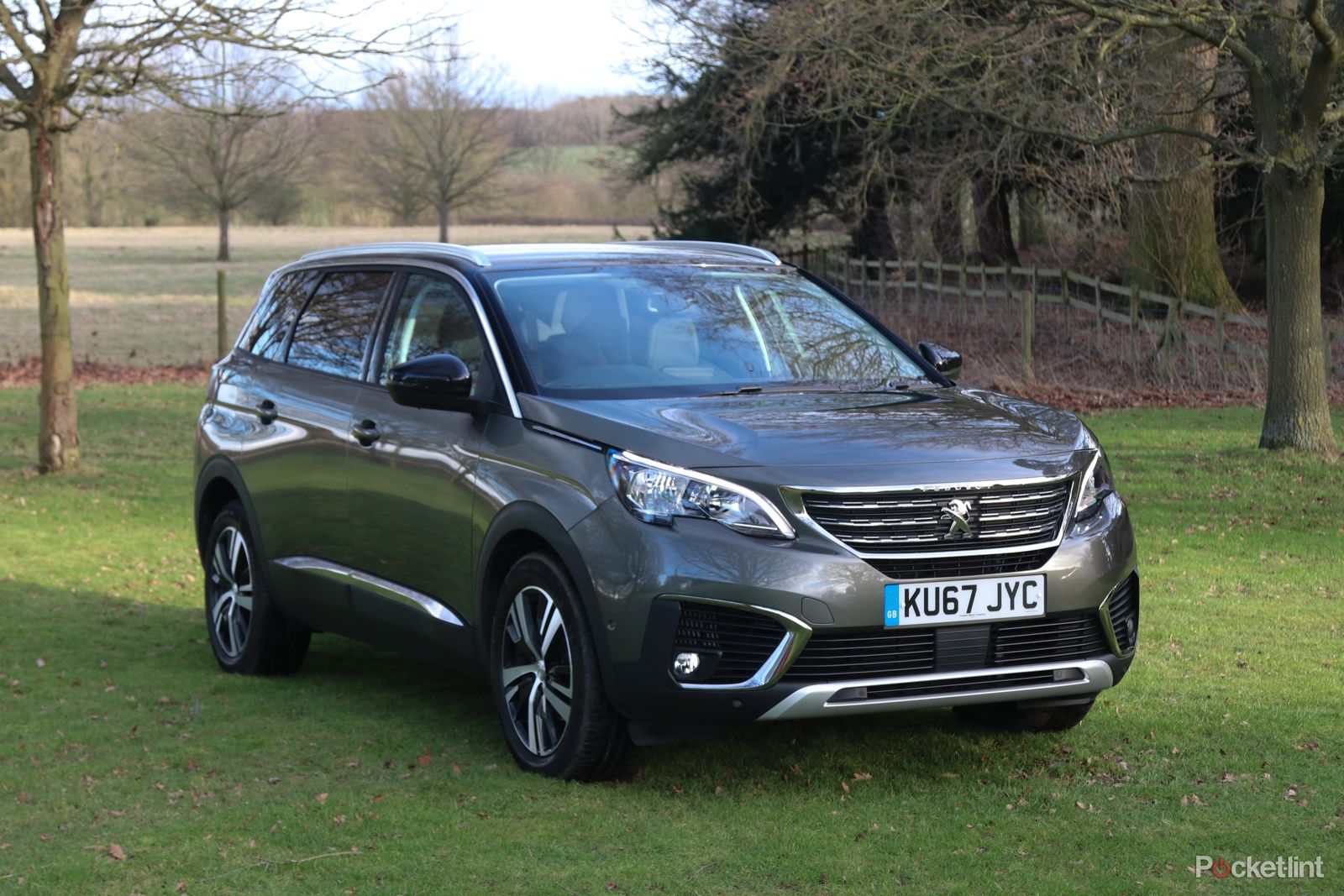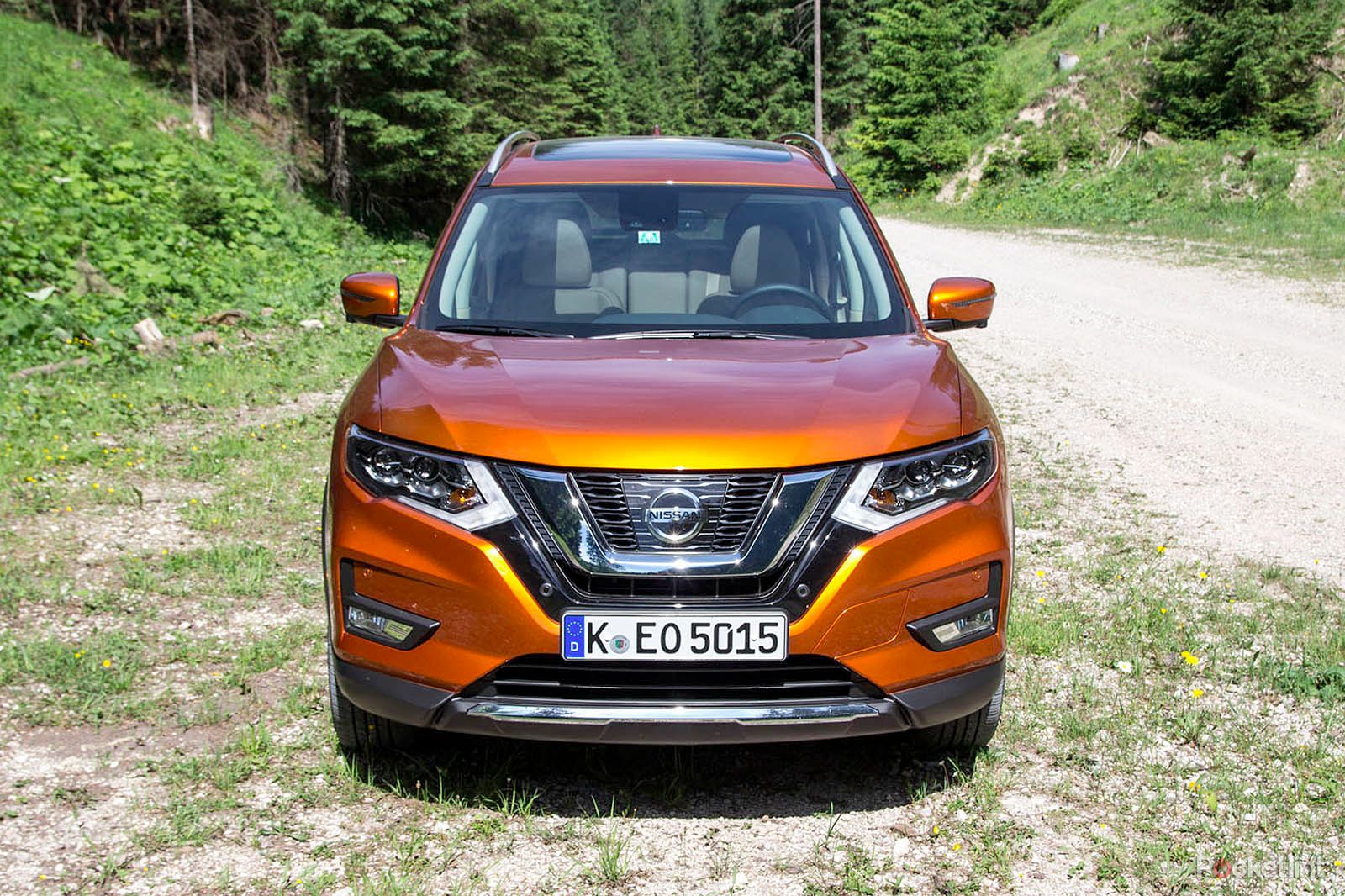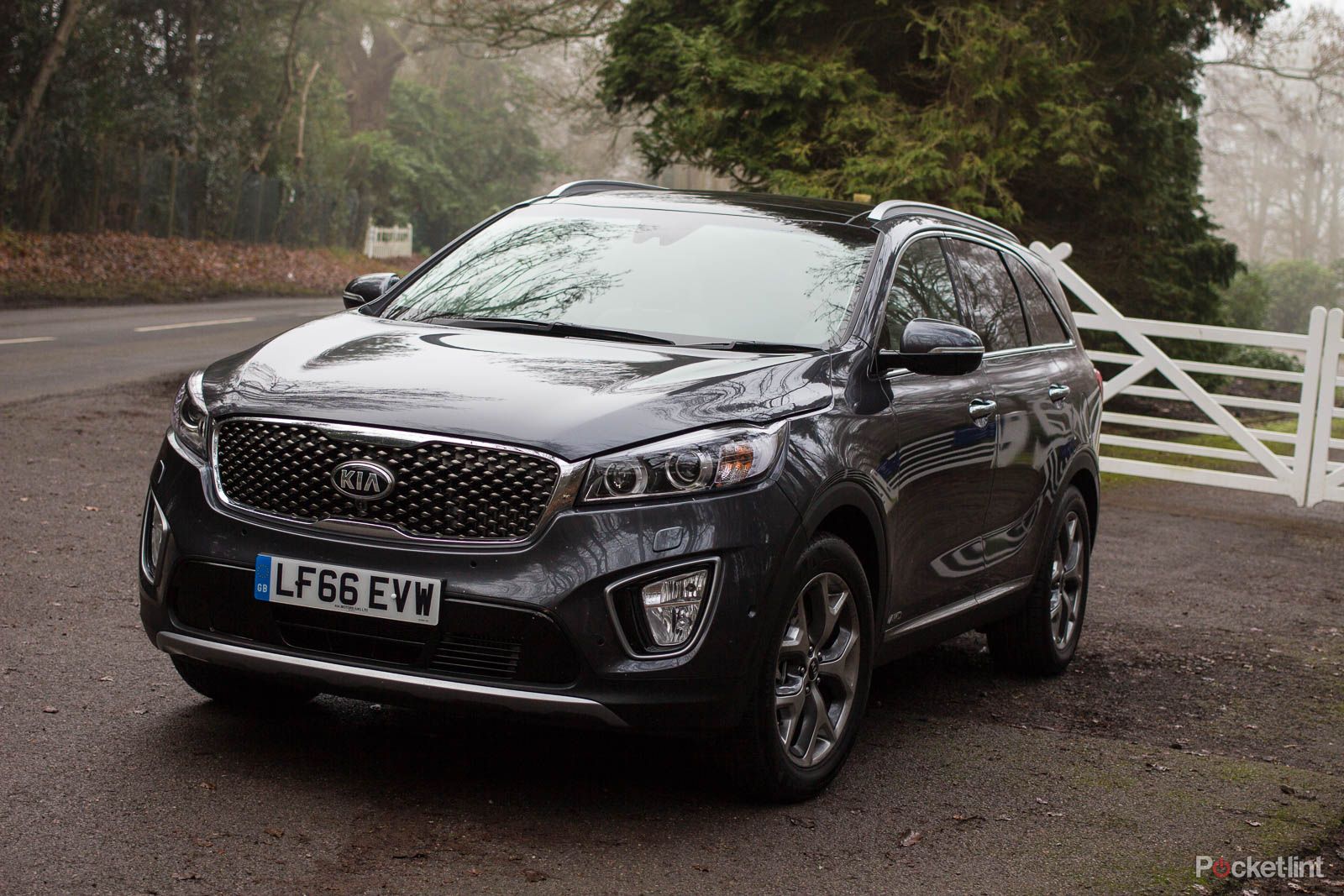The last Peugeot 5008 was a traditional MPV (Multi-Purpose Vehicle). And nobody wants one of those anymore. So for 2018, the 5008 has been reinvented as – you guessed it – an SUV (Sports-Utility Vehicle).
Our quick take
Peugeot has recast its big family MPV in the mould of an SUV – and we know that plenty of people will be happy about that from an image point of view. It's good value and very well-equipped, too, plus there's a reasonable range of engines to choose from.
The standout feature is arguably its design and that innovative i-Cockpit. But it won't suit everyone, and after a week living with the 5008 we did start to wonder whether Nissan's and Skoda's more conventional approach is ultimately better and easier to live with.
We like the smaller 3008 and rate it as one of the better buys in the small-mid SUV class, so why does the 5008 lose half a star compared to its sister car? Primarily because, when it comes to a seven-seater, what's happening in the back half of the car is arguably as important as what's going on at the front. Sure, it's got the space and the kit tick list, but we don't think the 5008 is particularly well optimised from a usability point of view for the travails of family life and multiple-people carrying.
However, if you're looking for standout design, plenty of kit and the rear quarters do work for you and your brood, there's still plenty to like about Peugeot's big people carrier – sorry, SUV.
Alternatives to consider
Nissan X-Trail
As 5008 is to 3008, so X-Trail is to Qashqai. Less dynamic and compact, and more family-orientated, the X-Trail gives you 7-seats without quite the visual bulk of the Peugeot's rear end, so if aesthetics is your bugbear, this might be where to turn. There's four-wheel drive on offer, plus bigger engines and if you don't want or need those 7-seats, you can keep the X-Trail as a 5-seater and just enjoy a massive boot.
Read the full article: Nissan X-Trail review
Kia Sorento
It's a good 15cm longer than the Peugeot, and the price kicks off at about where our test model 5008 was specced out to – so the Sorento is arguably a level up from the Peugeot. As you'd expect, there's more space inside – particularly for the third row, and the boot remains usable. The cabin isn't super premium but it's well equipped, a refined cruiser, even has towing capability and doesn't look too shabby at all. There's Kia's 7-year warranty too. The thinking man's 7-seat SUV.
Read the full article: Kia Sorento review

Peugeot 5008 - 3.5 / 5
| FOR | AGAINST |
|---|---|
|
|
It seems like barely a day goes by without a new SUV coming onto the market, but in Peugeot's defence it's the logical thing to do – customers increasingly won't buy anything that isn't an SUV, so carrying on with the old model would have been commercial suicide.
The 2018 car adopts the same design language as the smaller 3008 which we enjoyed so much last year. In fact, in a clever slight of manufacturing hand, the 3008 and 5008 are identical from the front seats forwards. But in the 5008, behind the driver's pew you get three individual chairs (not a bench) and a pair of pop-up seats which spring out of the (otherwise massive) boot.
So why might you be interested in a 5008? Well, if you have a growing brood to move around – if you basically ever need five proper seats or more – this Peugeot joins a very select choice of good value, mid-large SUVs that you'll have to choose from if you haven't got the funds, or don't want to deal with the bulk of cars likes the Land Rover Discovery, Volvo XC90 and Audi Q7. The Peugeot's true rivals are the Nissan X-Trail, Skoda Kodiaq and Kia Sorento – but has it got what it takes to out-gun these smart-choice modern family haulers?
An SUV in style, but not substance
Peugeot styling has got clever again – we mentioned that with the 3008. Having gone through a few years where it made cars that looked like blancmanges on wheels, design director Gilles Vidal has overseen a revolution which started with the 208.
In the 5008 that means complex surfacing and colour break-ups with cladding, chrome elements and glossy trims. It's busy (there are chromed elements which run between the bonnet and the wing, for instance) but it's also distinctive – and it certainly looks more premium than Peugeots of old.
And small children everywhere should be glad that the gaping "shark coming to eat you up" front grille has been banished with this generation of cars. These new ones could pass for a Merc's equivalent on a glanced sighting.
Nonetheless, the 5008 is a little bit more show than go – it's not really an SUV in the true sense of the word, and that blocky rear aspect with its high roofline and upright rear certainly marks it out as being more utility-orientated than its dynamic small brother, the 3008.
You're also out of luck if you're hoping you'll be able to haul seven people across a muddy field, as the 5008 is based on a car platform that it shares with 308, 3008 and some Citroen vehicles – and you can't have four-wheel drive.
Not so 4x4 now, eh? No matter, because four driven wheels will only take you so far, it's tyre technology that's really key and so, in our view, it'd be daft to dismiss the 5008 on this factor alone... unless you live on top of a mountain. If you need better grip for winter or inclement conditions, try a set of mud-snow tyres for £500. Still, this is one area where the 5008 gets a black mark compared to its rivals – which all offer all-wheel drive capability (in some versions).
On board – a Tardis with style but some usability issues
That the 5008 shares its front half with the 3008 pays dividends, because you get a novel, innovative driver environment which Peugeot calls i-Cockpit.
Having stopped Apple claiming that one when Cupertino finally gets round to building its car, what Peugeot has put on the table takes a little adjusting to. The gauges – actually a digital panel – is placed right on top of the dashboard, under the windscreen. You don't look through the steering wheel to see it (as on most cars), instead you look over the steering wheel. Which when written down sounds a bit nuts, until you realise that the steering wheel is tiny compared to most cars, so it basically sits in your lap. This makes the gauges easy to see, but the wheel's size and its heavily squared off nature is more of an acquired taste.
Meanwhile, in the centre section, there's a double bank of piano-style keys. These control key safety items such as hazard switch and demister on one line, and shortcuts for the touchscreen menu (nav, media, radio etc) on the one stacked above. They're lovely to press, but their labelling with icons leaves you mis-pressing them quite often.
Above these keys is an 8-inch capacitive touchscreen, which projects up from the dash and works well. It's reasonably responsive, but too much has been crammed into here – including the heater controls! – which seems to be an increasing 2018 trend.
Nonetheless, the architecture of the dashboard makes it feel pretty spacious, apart from a ledge on the passenger side which feels like it intrudes into your knee space (that's the perception, but actually it doesn't). There's a vast bin between the seats, which will swallow a tablet and a couple of big bottles of water, while the door bins are big – although not lined like they are in cars like the Skoda Kodiaq – so stuff rattles and slides about inside them.
In the back – acres of space, if you're in the middle row
In the back of the 5008 is an acreage of room (well, not literally, but you get the gist). The three rear seats individually slide, but in their standard placement you won't complain about leg or headroom back here, even if you're six-and-a-half feet tall.
What families will really care about is that each seat – including the middle one – has isofix anchor points, so if you have three young kids who all need bulky car seats, Peugeot provides answers where other makers don't. You might also care that those rear-most seats which pop-up out of the boot are easy to deploy and collapse – you simply yank at a red tab in the boot floor and they (with a bit of effort) haul up and lock.
Like all cars this side of a Discovery/XC90, no adult is going to want to sit in the back for long though. Kids up to their early teen years will probably be fine, and even then, it's leg – rather than head – room that's the real issue, which you can meter out by sliding seats in the middle row forwards.
The outer middle seats get a pop-up picnic table, which has a horizontal position for drinks/food and a tilted, 45-degree position for resting a tablet or book on. There's no lower ledge, though, so it tends to slide off and there's not the sophistication of a side pop-out cupholder as there is on say, the VW Tiguan.
Getting to the back row is a pain, too. You have to flip a lever on the outer seats in the middle row, but that only springs the backrest forward, leaving a tiny gap to clamber through. If you're not a six-year-old gymnast, you'll then need to reach down to the bar that's below the squab to slide the seat forward too. Rivals do this better with a one-function tilt-and-slide action.
It'll sound like nit-picking, but back here you can see you're in a sub-£30k car, as the rear-most seat belts are free to clank around when not in use, and if you have the rear seats deployed then there's no clever placeholder for the rear load cover tonneau – so you'll probably throw it into the garage on week two of 5008 ownership, where you'll forget about or break it. Again, rivals (Kodiaq particularly) do this stuff better.
With only five seats up, the boot space of the 5008 is a gargantuan 780 litres, although Peugeot's floor setup with the rearmost seats stowed is interesting to say the least – a set of rigid covers fold out from the leading edge of the boot to cover up the belt buckles and things that you'd snag luggage on. Fair enough, except there's a gap left between these covers and the rear edge of the middle seat where you will – and we did – lose things. All seven seats up and the 5008 is broadly in the same boat as its rivals: you'll still be able to chuck in three school bags, a couple of coats and maybe a bag of shopping – but you've ultimately now got less boot space than in the smallest city car.
On the road – an acquired taste
No one buys a family SUV to take it to the Nurburgring to run hot laps. Still, it's nice to know it will get you out of trouble when needed, or is refined enough to allow you to hear those kids whose voices mysteriously always seem to go all soft and hushed at motorway speeds.
In general, the Peugeot 5008 isn't a bad car to either drive or ride in. In the driver's seat, the standout aspect is the i-Cockpit setup and that small steering wheel. The wheel makes the car feel darty and dynamic in a way, when it's actually not.
But we like the small wheel a lot less here in the larger 5008 than the smaller 3008. It's hard to quantify why, objectively, other than to say that when driving a much larger car, the steering wheel's (lack of) size and squareness starts to feel at odds with how the vehicle behaves dynamically, and for you to relax into the drive. We kept finding ourselves taking several stabs at corners, continually adjusting inputs, especially on narrower country roads.
It's a relatively refined drive though – you can hear passengers on the motorway, as the wind and road noise is relatively well contained. The ride's nothing like as fluent as Peugeots of old, though, and tends to feel busy most of the time on the UK's rubbish roads – but it's not desperately harsh and the overall setup is probably better for small, sensitive stomachs in the back.
We drove the 1.2-litre, 130-horsepower petrol 5008, with an automatic 6-speed gearbox. You'll also find a manual 6-speed available in most versions, plus a larger 1.6-litre turbo petrol and two diesels.
The engine we had is an intriguing choice though. It only has three cylinders and is a tiny capacity for a car of this size. But it pretty much copes. It spins freely, thrums about its business quite happily – if a little noisily at times – and so long as you're not scared to use the throttle quite abruptly, you won't get caught out in traffic.
If you regularly do long motorway journeys with four (or more) people onboard and with luggage then get the diesel, or larger petrol perhaps. But this engine's fine for general day-to-day stuff.
Where it's a letdown is with fuel economy. To be fair to the Peugeot, the temperature during our week with it never got above 2C, we did lots of short trips with the fan running full heat to keep kids in the back warm (the rear seat blower is the noisiest we've ever encountered by the way) and in this situation, it didn't break 30mpg. Even a gentle motorway run for 250 miles only brought fuel economy up to 36mpg. Factor on the diesel doing between 40mpg (town) to 50mpg (motorway) and do you maths accordingly if you're unsure which engine to go for.
Plenty of 'Allure' and good value
Where Peugeot scores a winner – particularly against the competition – is in the standard spec and pricing of the 5008. Our car, an Allure, which is the second grade up of four in total, comes as standard with neat 18-inch alloys, part leather and premium-looking cloth interior trim, the 8-inch centre touchscreen with navigation, 12-inch digital gauge cluster (with five modes including a map take over, tradition dials and a minimised, speed-only layout). Handily, you also get Apple CarPlay and Android Auto as standard (on all grades), a reversing camera, front and rear park sensors, and a Safety Plus pack which includes blind spot detection, lane keep assistant, driver attention alert and auto headlight high-beam assist.
If you feel the need for more, then GT-line trim gets you an induction phone charging pad in the cubby, and LED headlights, while GT trim adds adaptive cruise control, keyless opening, an electric tailgate and massaging leather seats. If you save yourself from the automatic gearbox of our car, the 1.2-litre engine and Allure trim costs just £26,815. The auto gearbox, wireless charging, metallic paint and auto tailgate of our test car bumped the price up to £29,610 – but we don't think you need these. The auto tailgate is slow, and the cabin has numerous USB ports and 12V chargers anyway.
To recap
It's out with MPV and in with SUV. The 5008 has still got 7 seats and space aplenty, plus a strong specification for its asking price - especially on the tech and safety side of things. However, there are nagging issues in the back - which is where it matters most in a car such as this.


